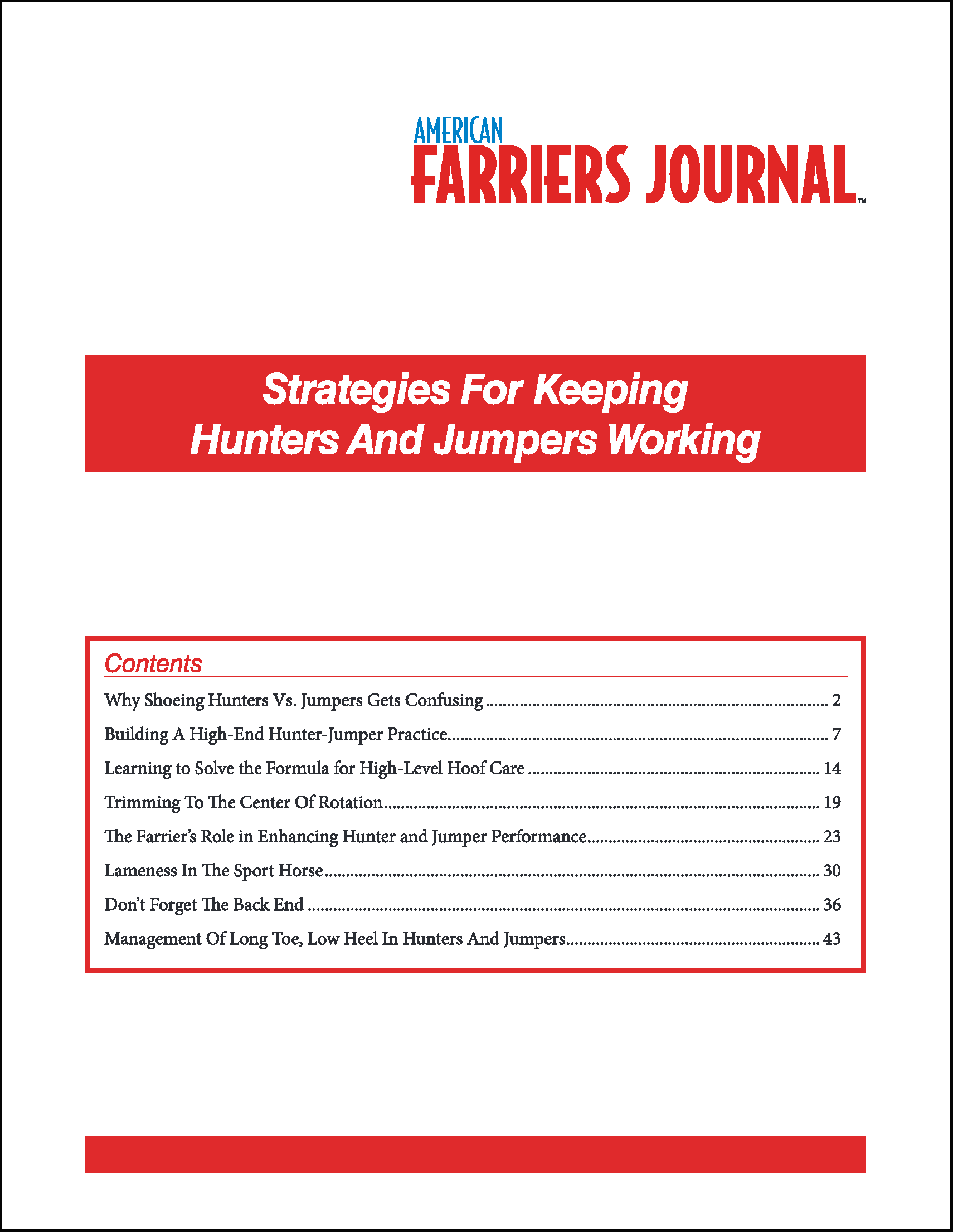
Dear Hoof-Care Professional,
This free 50-page guide is jam-packed with valuable, time-tested practices to help you improve your work with horses specializing in hunter and jumper competitions. You’ll gain fresh perspectives from farriers who have built their practices around the key insights into the differences between hunters and jumpers and what that means in discovering new farriery terms and enhancing your hoof-care skills.
In this report, you’ll find hunter-jumper shoeing tips that cover topics such as…
- Enhancing Hunter and Jumper Performance.
- Trimming to the Center of Rotation.
- Building a High-End Hunter-Jumper Practice.
- Managing Long Toe, Low Heel in Athletes.
...And Many More!
Critical Differences in Movement
Show hunters are judged for conformation and type, how they trot and canter, and their form when jumping, but show jumpers focus on how fast they can jump a course without knocking the fences down.
Horse shows often refer to both as one category, but the differences in their movement sets them apart. A graph for a hunter’s movement appears smooth with points marking a certain number of strides between fences, but a jumper’s movement would appear sporadic with different numbers of strides between fences.
Different movement calls for different techniques such as:,/p>
- Shoeing hunters’ front legs in a light shoe to keep the knee flat and stride low to the ground.
- Focusing on support and breakover when shoeing jumpers that land hard and turn tight.
- Using aluminum shoes in the front to lighten the load and steel in the back for balance.
Stepping into this lucrative business can provide both challenges and rewards. Knowing the difference between hunters and jumpers is only the first step to succeed in shoeing competitive horses.
Learn from Competition Experts
It’s not only the difference between hunter and jumper that makes shoeing equine athletes difficult.
These athletes face more wear and tear than other horses, so they need your help to establish the knowledge and formulas for success. This guide contains 50 pages of techniques from industry-leading farriers who have worked with show horses for decades.
- Hall of Fame farrier Red Renchin developed a formula around continuing education for producing high-level hoof care for hunters and jumpers.
- Jack Miller shod show horses from coast to coast for decades using aluminum shoes and focusing on the horse’s balance.
- Veteran farrier Mike Givney built his hunters and jumpers shoeing business around the principles of having options and paying attention to details.
In the busy lives of farriers, time counts in visiting clients and providing the highest level of hoof care. Don’t miss out on expanding your shoeing business with top strategies to provide the best hoof care for equine athletes.
American Farriers Journal is dedicated entirely to helping hoof-care professionals as they practice the art and science of farriery that’s necessary to build and maintain a profitable footcare practice. Our editors make it their job to collect the valuable knowledge and practices of leading farriers from around the world to help hoof-care professionals improve their footcare practice.
Yours for better hoof care,
Jeff Cota
Managing Editor
American Farriers Journal


